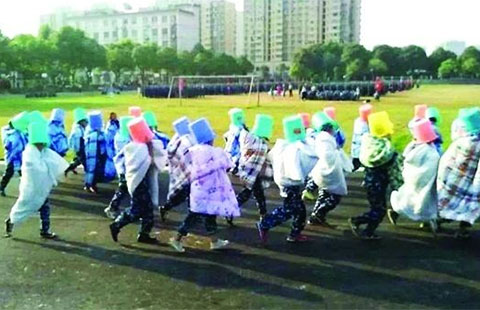
IV. Women and Health
China has set up a medical and health service system covering urban and rural areas, and has been working hard to enhance disease prevention and control capabilities, expand the overall coverage of medical insurance, improve laws and policies on maternal and child health as well as the service system in this regard, implement maternal and child healthcare programs, and endeavor to make maternal and child health services more equitable and accessible. As a result, women' s health has significantly improved.
A relatively sound system of laws and policies on maternal and child health has been established. The state has enacted, revised and implemented the Law of the People's Republic of China on Maternal and Infant Health Care, the Law of the People's Republic of China on Population and Family Planning in addition to a number of other laws and regulations, and introduced a series of supporting regulations and normative documents, to provide a legal framework for maternal and child health work. The state has included women's health indicators in the overall plans and special plans of the national economy and social development, made maternal and child healthcare a key element of the provision of national basic public services, and incorporated medical treatment of breast and cervical cancers into the medical security and assistance system for major diseases, thus improving women's healthcare.
A network of maternal and child health services has been put in place. A network of maternal and child health services covering both urban and rural areas has taken shape in China, with maternity and child care institutions as the core, community-level health care institutions as the foundation, and large or medium-sized medical institutions and relevant research and teaching institutions as the support. By the end of 2014, there had been 3,131 maternity and child care institutions throughout the country. The state has worked hard to improve community-level maternal and child health services and managed to provide full life-cycle health services for women. The state has also established and improved a system of annual reporting on maternal and child health, and a monitoring network. It has optimized the allocation of health resources, and increased funding for maternal and child health in rural and remote areas. It has accelerated personnel training in this regard and strengthened staffing for those institutions.
Maternal and child health services have become more equitable and accessible. The state has implemented basic public health service projects and major public health service projects on maternal and child health, doing all it can to improve the systematic management of pregnant and lying-in women, regulate service behavior, improve service quality, and make access to maternal and child health services more equal. By 2014, 90 percent of pregnant and lying-in women had access to basic public health services. The state has implemented major projects to subsidize hospital childbirths for rural pregnant and lying-in women, benefiting 57.12 million. The national hospital birth rate increased from 72.9 percent in 2000 to 99.6 percent in 2014, and the same rate in the countryside grew from 65.2 percent in 2000 to 99.4 percent in 2014.
In 2009, the state launched a program of free cervical and breast cancer check-ups for rural women, providing free cervical cancer check-up for 42.87 million and free breast cancer check-up for 6.13 million, in addition to extending medical treatment to 31,077 women having financial difficulties. The state has carried out major projects on AIDS, syphilis and hepatitis B, preventing mother-to-child transmission; 60.53 million pregnant women have benefited from the examination or treatment. It has also held women' s health programs such as the Chinese Women' s Health Initiative, while extending support to social organizations in organizing various forms of activities promoting women' s health.
Reproductive health services for women have been further strengthened. The state guarantees that women enjoy good reproductive health services throughout the life cycle, such as conducting general surveillance and treatment of gynecological diseases, and providing adolescent and old-age healthcare. It has implemented the policy of free technical services for family planning, promoted informed choice of contraceptive methods and reduced unintentional pregnancies. It has kept investigating and preventing fetal sex identification for non-medical needs and sex-selective pregnancy termination. It has provided health education, vaccination, maternal health care and other basic public health services for women in the floating population, and has launched pilot programs to ensure equal access to family planning and other basic public services by women in the floating population.
Women's health has further improved. Women's average life expectancy grew to 77.4 years in 2010, an increase of 4.1 years over 2000. The maternal mortality rate has fallen significantly, from 88.8 per 100,000 in 1990 to 21.7 per 100,000 in 2014, meaning that China has achieved the United Nations Millennium Development Goals ahead of time. The gap in maternal mortality rate between urban and rural areas and between different regions has been further narrowed: The rural-urban gap decreased from a factor of 2.4 in 2000 to 1.08 in 2014. In 2000, the maternal mortality rate of western China was 5.4 times that of eastern China; the figure dropped to 2.6 times in 2014. The World Health Organization lists China as one of the 10 countries with high performance in maternal and child health.








